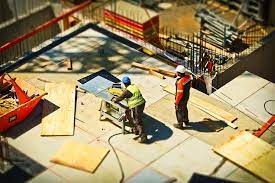The Evolution of Green Building: How Builders Are Embracing Sustainability?
Sustainability has become an integral part of the construction industry. Building experts are taking significant steps towards greener practices.
People are getting environmentally conscious. Thus, builders in Wilmslow are increasingly embracing sustainability. Through this, they reduce their ecological footprint. They also create more energy-efficient structures.
The evolution of green buildings is reshaping the industry. This blog will devise the various ways building professionals are adopting sustainable practices. It also will discuss how they revolutionise the construction landscape.
Below are some of the major ways of building companies opting for sustainable practices stated.
Using Alternative and Low Carbon Building Materials
Nowadays, building contractors are exploring alternative building materials, like:
Recycled steel
Reclaimed wood and
Eco-friendly concrete substitutes.
These materials have a lower carbon footprint compared to traditional options. Thus, they are an ideal choice for environmentally conscious building companies.
Experts can significantly reduce their projects' environmental impact by opting for sustainable materials. Additionally, using materials that are locally sourced helps in minimising transportation-related emissions. It further enhances sustainability.
Incorporating these materials benefits the environment. It also promotes innovation in the construction industry. Embracing these alternatives, building contractors contribute to the growth of eco-friendly practices. They also set a positive example for others in the field.
The Utilisation of Retrofit Tools
Builders are now turning to retrofit tools. With them, they can upgrade existing structures. They can make buildings more energy-efficient. Retrofitting involves modifying buildings by incorporating advanced technologies and systems. These can reduce energy consumption.
This approach allows building companies to transform older structures into sustainable ones. It eliminates the need for extensive demolition or reconstruction.
Professionals install energy-efficient lighting, insulation, and heating systems in buildings. With them, they can improve the energy performance of buildings. They also reduce their environmental impact.
Retrofitting benefits the planet. Besides, it provides cost savings to property owners by lowering energy bills.
Opting for Smart Buildings
Construction companies are embracing the concept of smart buildings. They utilise advanced technologies to optimise energy consumption and enhance occupant comfort.
These intelligent structures have sensors, automated systems, and data-driven analytics. They help in monitoring and controlling energy usage. By integrating smart building systems, professionals can achieve significant energy savings. Even, they can offer a comfortable and productive environment for occupants.
Smart building systems can automatically adjust lighting, temperature, and ventilation based on occupancy and environmental conditions. Moreover, they allow for remote monitoring and control. This way, they help property owners to manage their buildings efficiently.
Improved Air Quality
Property development companies are increasingly focusing on improving indoor air quality in buildings. Poor indoor air quality can lead to health issues and discomfort for occupants.
Experts are implementing ventilation systems to combat this issue. These systems can enhance airflow and reduce the presence of pollutants. Building professionals are using low VOC (volatile organic compounds) materials. They also incorporate air filtration systems. With these, they can create healthier living and working spaces.
Improved air quality promotes the well-being of occupants. It also contributes to overall environmental sustainability.
Conducting Climate Risk Analysis
Builders understand the importance of conducting climate risk analysis for their projects. Understanding the potential impacts of climate change on buildings is essential for long-term sustainability.
By assessing climate risks, they can identify vulnerabilities. They also can implement appropriate design strategies and measures. With them, they adapt to changing conditions. This includes considering factors like:
Extreme weather events
Rising sea levels and
Increased temperatures.
Conducting climate risk analysis allows professionals to enhance the resilience of their structures. Moreover, it can minimise future environmental and economic impacts.
Next-generation Building Design
The providers of home renovation services are embracing next-generation building design principles. These principles prioritise sustainability and energy efficiency. Moreover, these designs focus on:
Optimising natural light
Reducing energy consumption and
Maximising the use of renewable resources.
Experts use innovative architectural techniques and cutting-edge technologies. Through this, they create structures. These structures seamlessly integrate with their surroundings. Besides, they minimise environmental impact.
The next-generation building design incorporates elements like:
Green roofs
Passive heating and cooling systems and
Rainwater harvesting.
These features enhance sustainability. They also create aesthetically pleasing and functional spaces.
Choosing Renewable Energy
Builders in Wilmslow are incorporating renewable energy sources into their projects, like:
Solar panels
Wind turbines and
Geothermal systems.
By harnessing clean and renewable energy, they can significantly reduce their reliance on fossil fuels. They also decrease greenhouse gas emissions.
Renewable energy solutions contribute to a greener future. They also offer long-term cost savings for property owners through reduced energy bills.
Biodiversity Enhancing Solutions
Building companies are recognising the importance of biodiversity in urban environments. Thus, they implement solutions to enhance it. They incorporate green spaces into building designs, like:
Rooftop gardens
Vertical green walls and
Native plant landscaping.
These green spaces support biodiversity.
These features provide habitats for local wildlife. They also improve air quality. Besides, they contribute to the overall well-being of the community. They can promote a harmonious relationship between the built environment and nature.
Builders in Wilmslow have embraced sustainability as a guiding principle. They revolutionise the construction industry and pave the way for a greener future. Incorporating these practices, they demonstrate their dedication to creating sustainable and energy-efficient structures. These can benefit both present and future generations.




Comments
Post a Comment